How to fix picture is flipped vertically on Panasonic Security Camera?
- JJoshua AllenSep 5, 2025
If the Panasonic Security Camera picture is flipped vertically, ensure that the stand-alone (Desktop) installation setting has been selected correctly.
How to fix picture is flipped vertically on Panasonic Security Camera?
If the Panasonic Security Camera picture is flipped vertically, ensure that the stand-alone (Desktop) installation setting has been selected correctly.
What to do if Panasonic Security Camera has no power?
If your Panasonic Security Camera has no power, make sure the AC cable of the external DC power supply is securely connected to the AC outlet and that the power plug of the external DC power supply is connected properly. Also, ensure the LAN cable is securely connected to the LAN connector for IP control. If using PoE++, verify the network cable is properly connected. Power may not be supplied if the total power limit is exceeded on power supply devices with multiple PoE++ terminals. If connected to a controller, ensure it is properly connected. If operating from a wireless remote, verify its functionality.
Why my Panasonic AW-UE150KP Security Camera cannot operate using the wireless remote control?
If you are unable to operate your Panasonic Security Camera using the wireless remote control, first check if the remote control's batteries are depleted or installed incorrectly. Replace the batteries if needed. Next, verify that the IR ID switches are correctly configured. Finally, check for any nearby fluorescent lights or plasma monitors that might be interfering with the wireless remote control signal.
What to do if multiple color bands (color bars) are displayed on Panasonic Security Camera?
If multiple color bands (color bars) are displayed on your Panasonic Security Camera, switch to the camera picture.
What to do if I cannot access my Panasonic AW-UE150KP from a web browser?
If the [LINK] LED of the LAN connector for IP control is not lit, it means that something is wrong with the connection to the LAN or that the network at the connection destination is not working properly. Check the LAN cable for defective contacts, and check the wiring.
How to fix something is wrong with the coloring of the pictures on Panasonic Security Camera?
If something is wrong with the coloring of the pictures on your Panasonic Security Camera, activate the ATW (Auto tracking white adjustment) function. Note that in some situations, the proper colors may not be reproduced using the ATW function.
How to troubleshoot no power on Panasonic AW-UE150KP Security Camera?
If no power is supplied to the Panasonic Security Camera, make sure the AC cable of the external DC power supply is securely connected to the AC outlet and that the power plug of the external DC power supply is connected properly. Verify the LAN cable is securely connected to the LAN connector for IP control. Ensure the network cable for the PoE++ compatible power supply device and the unit are connected properly. Note that power may not be supplied if the total power limit is exceeded on power supply devices that allow connections to multiple PoE++ terminals. If the unit is connected to the controller, ensure it has been connected properly. Consider the power source when performing operations from a wireless remote control.
Why do the screens displays take a while to appear on my Panasonic AW-UE150KP?
If a proxy server has been set using the [proxy setting] of the web browser, it is recommended that a 'Don’t use proxy' address be selected as the unit’s IP address setting.
Why the brightness changes cyclically or the colors change on Panasonic AW-UE150KP?
These phenomena (flicker) may occur under the illumination produced by fluorescent lighting, mercury bulbs or other types of discharge tubes.
What to do if the status display lamp does not light on Panasonic Security Camera?
If your Panasonic Security Camera's status display lamp isn't lighting up, it might be because the [Status Lamp] setting is set to [Disable]. To resolve this, change the setting to [Enable].
Essential warnings and cautions for safe operation, covering risks of electric shock, moisture, and proper handling.
Covers environmental conditions, proper lighting, handling, and avoiding damage.
Setting up the initial user account and installing the necessary viewer software.
Procedures for turning the unit on and off using various control methods.
Solutions for problems related to camera movement and remote control operation.
Solutions for issues with picture display, color, and menu visibility.
Detailed steps for manually adjusting focus, iris, shutter speed, and gain.
Procedures for setting and adjusting white balance modes (ATW, AWB, presets).
Adjusting image parameters like brightness, color, detail, and gamma.
Detailed settings for white balance modes, color temperature, and gain adjustments.
Configuration for video outputs (SDI, HDMI, MONI) and IP streaming.
Accessing and controlling the camera via a web browser on a PC.
Detailed setup for IP addressing, DNS, DHCP, and other network parameters.
Solutions for problems related to power, unit operation, and controller connectivity.
Troubleshooting steps for problems like no pictures, distorted images, or color issues.
Technical details on imaging sensors, lens, illumination, resolution, and sensitivity.
Essential warnings and cautions for safe operation, covering risks of electric shock, moisture, and proper handling.
Covers environmental conditions, proper lighting, handling, and avoiding damage.
Setting up the initial user account and installing the necessary viewer software.
Procedures for turning the unit on and off using various control methods.
Solutions for problems related to camera movement and remote control operation.
Solutions for issues with picture display, color, and menu visibility.
Detailed steps for manually adjusting focus, iris, shutter speed, and gain.
Procedures for setting and adjusting white balance modes (ATW, AWB, presets).
Adjusting image parameters like brightness, color, detail, and gamma.
Detailed settings for white balance modes, color temperature, and gain adjustments.
Configuration for video outputs (SDI, HDMI, MONI) and IP streaming.
Accessing and controlling the camera via a web browser on a PC.
Detailed setup for IP addressing, DNS, DHCP, and other network parameters.
Solutions for problems related to power, unit operation, and controller connectivity.
Troubleshooting steps for problems like no pictures, distorted images, or color issues.
Technical details on imaging sensors, lens, illumination, resolution, and sensitivity.
| Camera Type | PTZ Camera |
|---|---|
| Optical Zoom | 20x |
| Digital Zoom | 10x |
| Video Output | HDMI, 3G-SDI, IP |
| Horizontal Resolution | 1000 TV Lines |
| Pan/Tilt | Pan: ±170°, Tilt: -30° to +90° |
| IP Control | Yes |
| Pan/Tilt Range | Pan: ±170°, Tilt: -30° to +90° |
| Effective Pixels | 8.29 MP |
| Network Protocols | RTSP, RTMP |
| Power Supply | AC 100 V to 240 V |
| ND Filter | 1/4, 1/16, 1/64 |
| Shutter Speed | 1/1 to 1/10, 000 sec |
| Audio Input | 3.5 mm stereo mini-jack |
| Image Sensor | 1/2.5-type MOS sensor |
| Minimum Illumination | 0.5 lx (F1.8, 50 IRE, 1/30 sec) |
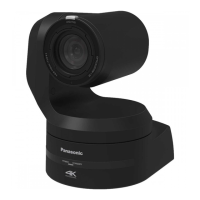


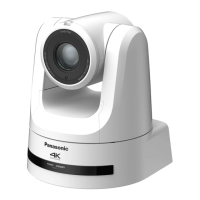
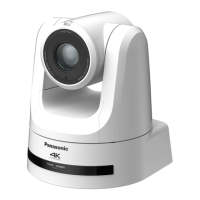
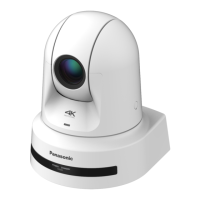

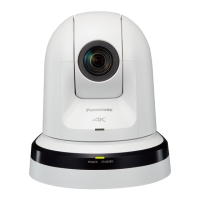
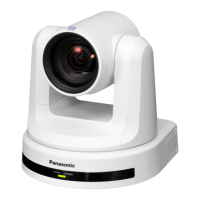
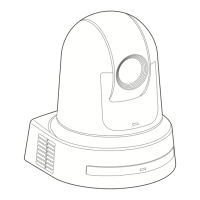

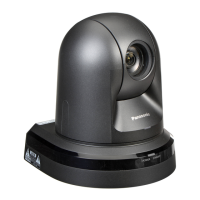
